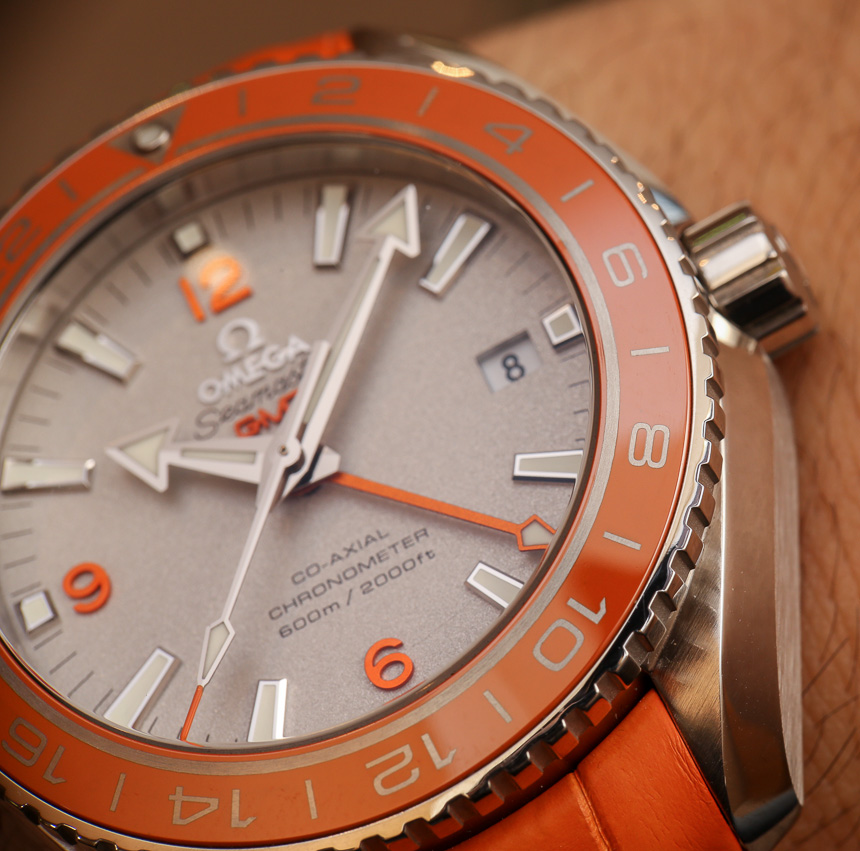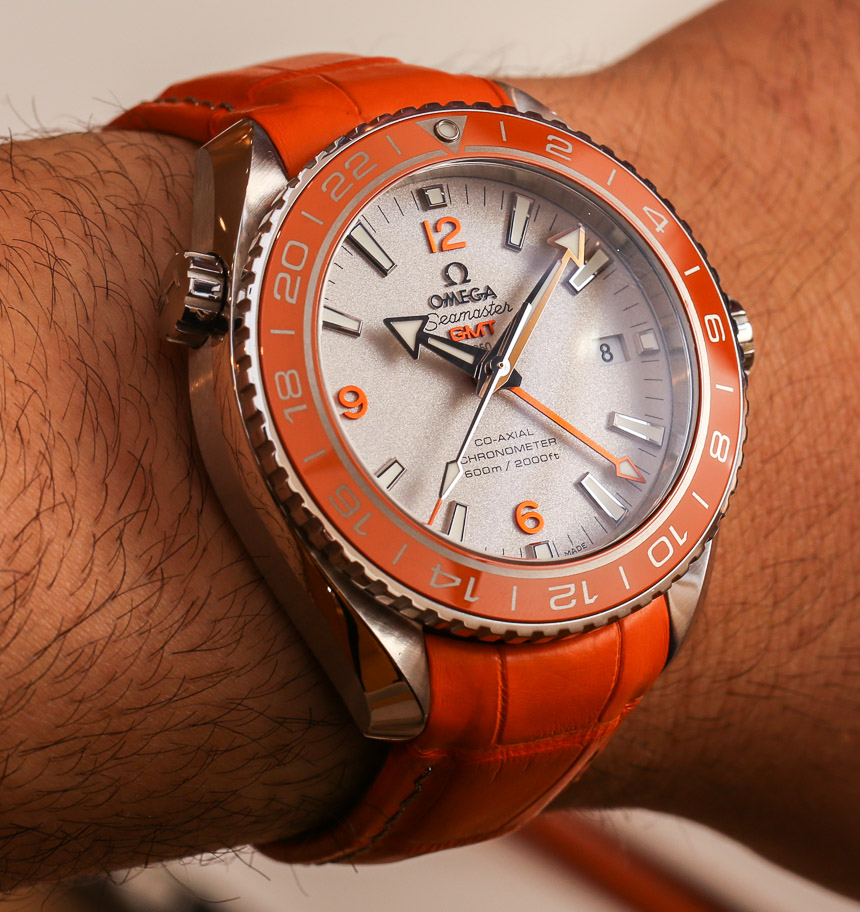
The rear of this Omega Seamaster Planet Ocean GMT Orange Ceramic watch has a curious phrase that I’ve never seen on a timepiece before. According to Omega it is something they’ve never placed on a case before either. A promise of “World Premiere” appears on the case back of this dive watch adjacent to the limited edition number. It suggests to the world that there is something inherently special that one has never seen before in a timepiece. True enough, this is Omega’s way of celebrating the first watch in the world to have an orange ceramic bezel, and it happens to be in a limited edition sport watch made of solid 950 platinum.
The “Word Premiere” is orange colored ceramic, and until now we’ve never seen it used on a watch. Omega actually produced some fun images of its platinum and orange Omega Seamaster Planet Ocean GMT with orange fruit that you can see here. So why is this a big deal? To make a long story short, ceramic is very difficult to produce in colors other than white or black and some dark colors such as blue and brown. Light colors present incredible problems because when ceramic is formed during a sintering process, the color tends to go away during the baking process. Omega, as well as brands like Rolex, are working tirelessly to improve not only the production techniques used to create ceramic watch parts, but also the colors they are produced in.
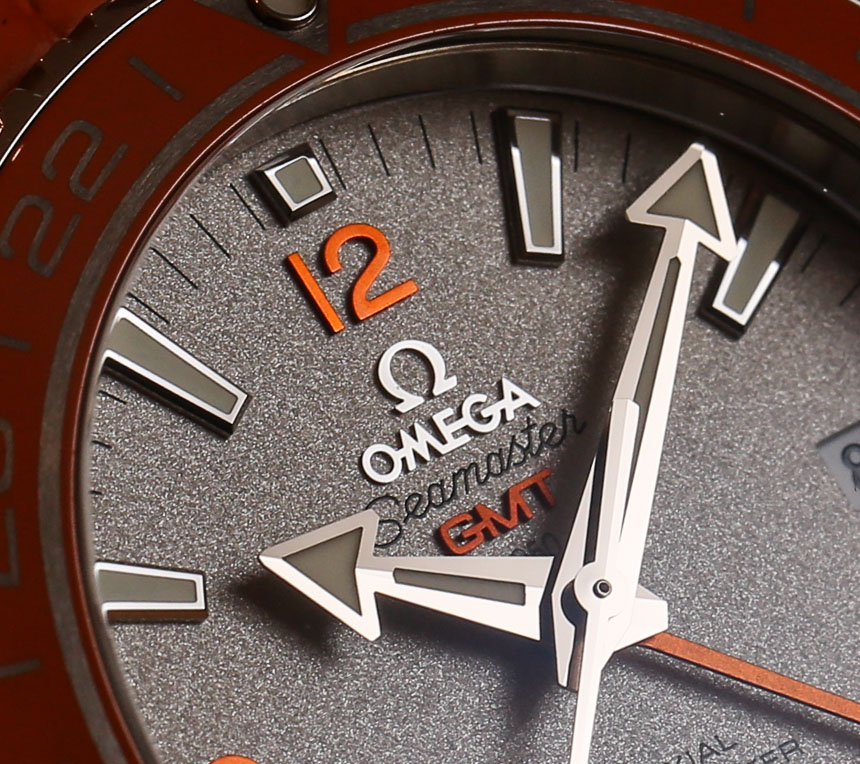
Last year Hublot released the first watch with red ceramic – though they haven’t followed up with any production models since. They did however prove it could be done. With Omega offering orange ceramic, the only remaining color to be successfully produced in a zirconium oxide (ceramic mostly used in watch making) is yellow. But that we can leave for another “World Premiere.” Omega has been struggling to make orange ceramic a possibility for over five years now. In 2011 I recall speaking with top people at the brand who expressed how difficult it was. So until now, all Omega Seamaster Planet Ocean timepieces with orange bezels continued to use the older colored aluminum technology while models with black or blue bezels used ceramic.
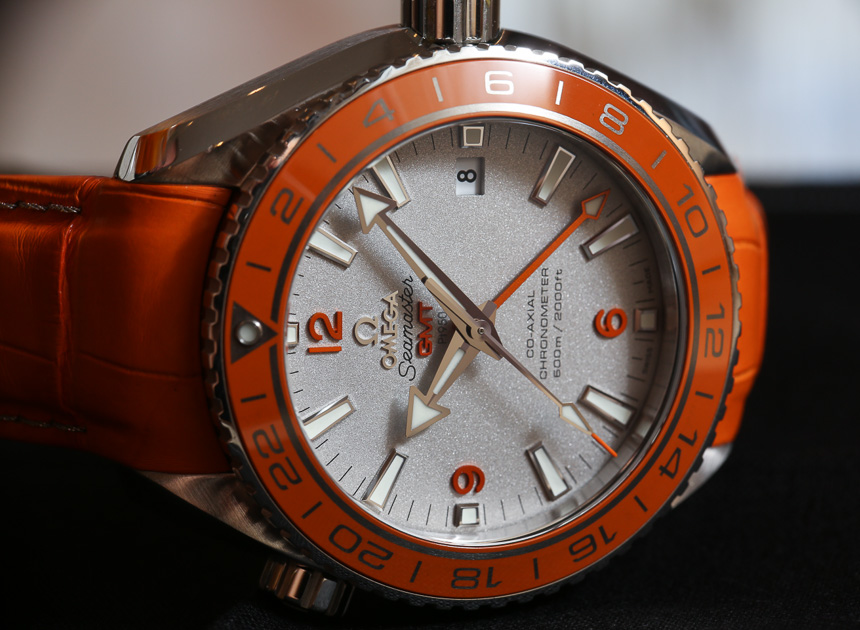
It isn’t clear when Omega first began to use ceramic bezels for most of its Omega Seamaster Planet Ocean watches but it was several years ago. The issue of course that was presented to Omega as well as brands like Rolex was the mass production of ceramic parts. Now in 2014 the industrial processes are much more sophisticated, but it is still a very time consuming and expensive process. I say this because while it may be true ceramic itself does not require precious materials, the process of inventing how to make it can be precious indeed.
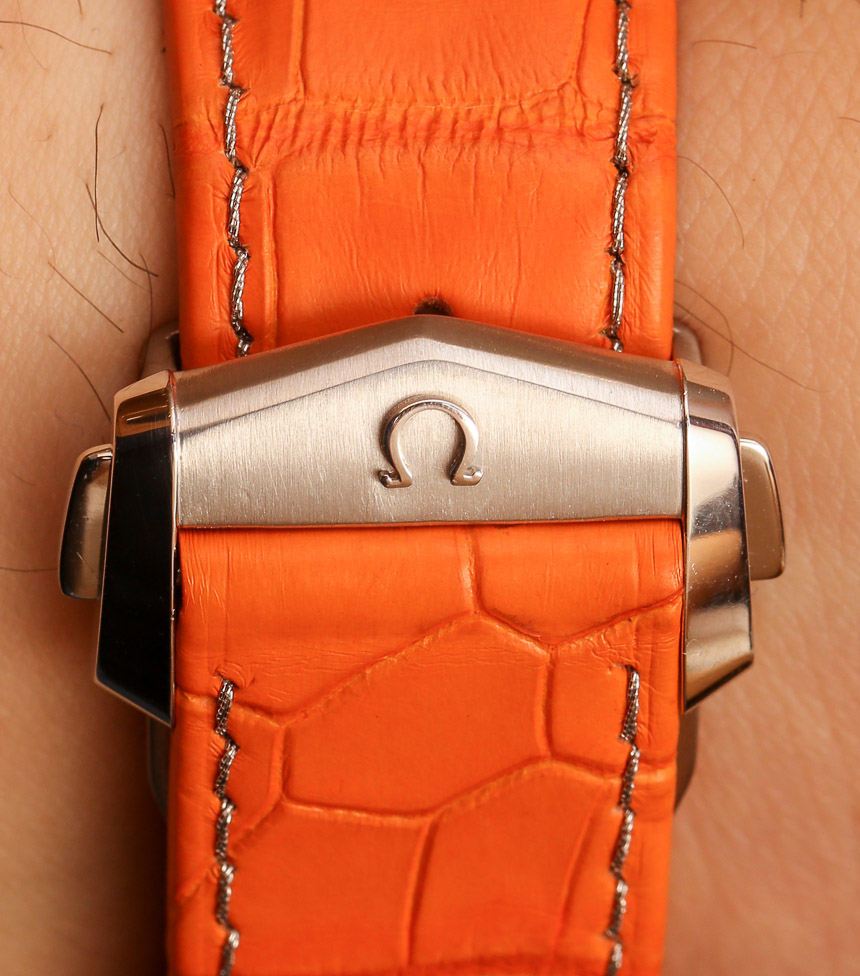
The reason Omega has produced only eight pieces of this limited edition Omega Seamaster Planet Ocean is because the orange bezels currently take a lot of work. Having said that, unlike Hublot or other brands with concept technology in a limited edition watch, they claim that orange ceramic bezels will become a regular part of the Omega Seamaster Planet Ocean watch collection soon. Further, the orange ceramic bezel on the watch isn’t just orange ceramic, but uses the brand’s Liquid Metal technology.
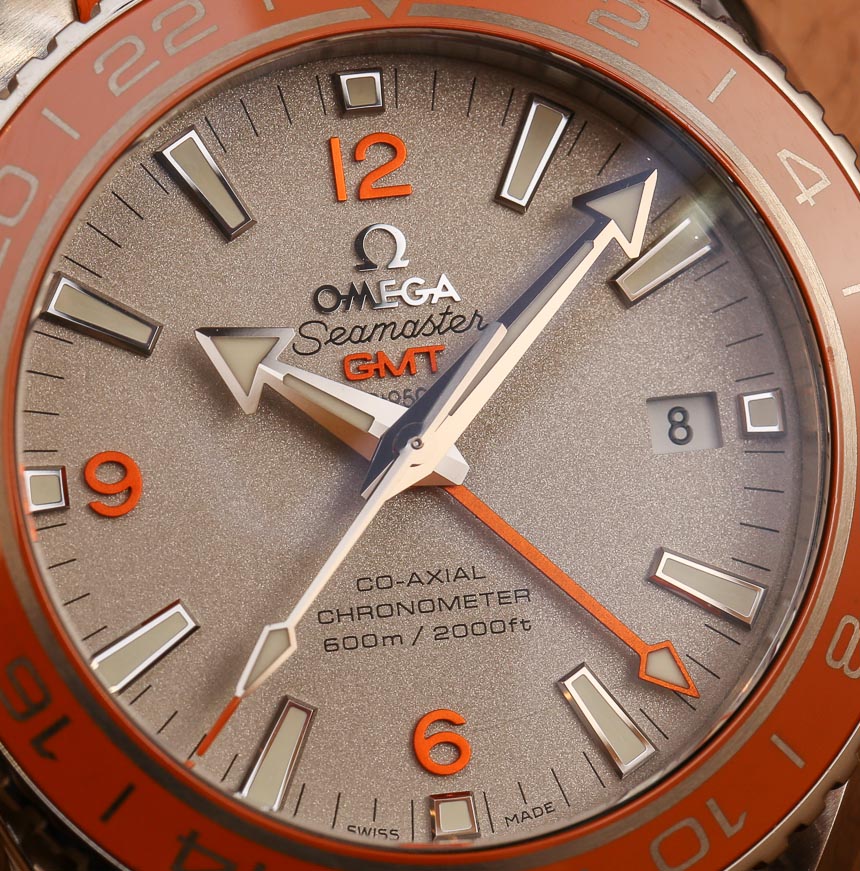
It was back in 2009 that Omega first debuted a timepiece with a Liquid Metal bezel. In fact they did so with an Omega Seamaster Planet Ocean watch in a limited edition. That set a sort of precedent that means Seamaster timepieces are preferred vehicles for debuting new case technology. Those more interested in how Omega produces not only ceramic bezels but also Liquid Metal (used to fill in the numerals and markers engraved into the bezel) can reference our 2011 article here. We recently saw Omega debut their new anti-magnetic technology in the Seamaster Aqua Terra 15,000 Gauss. So for 2014 it only makes sense that yet another new innovation should be launched through something in the Seamaster family.

